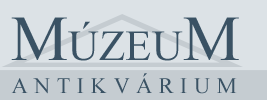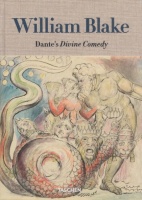categories
- Traffic and Vehicles Catalogue
- socreal.catalog
- Advertisement Catalogue
- Photo Catalogue
- Chinese and Japanese Catalogue
- New Holy Card Catalogue II.
- 12 interesting old books
 Books
Books
 Bibliophil
Bibliophil
 Antiques
Antiques
 Engraving
Engraving
 Maps
Maps
 Photos
Photos
 Antique Papers, Small Prints
Antique Papers, Small Prints
 Posters
Posters
- Circus
- Modern Graphics
- Socialist Realism
- NER Propaganda
- Others
cart
Cart is empty
You've not logged in
Schütze, Sebastian - Maria Antonietta Terzoli : William Blake - Dante's `Divine Comedy'. The Complete Drawings
- description
- additional information
Az utolsó 15 lap teteje kicsit hibás.
Celebrated around the world as a literary monument, The Divine Comedy, completed in 1321 and written by Dante Alighieri (1265-1321), is widely considered the greatest work ever composed in the Italian language. The epic poem describes Dante's journey through Hell, Purgatory, and Heaven, representing, on a deeper level, the soul's path towards salvation.
In the last few years of his life, Romantic poet and artist William Blake (1757-1827) produced 102 illustrations for Dante's masterwork, from pencil sketches to finished watercolors. Like Dante's sweeping poem, Blake's drawings range from scenes of infernal suffering to celestial light, from horrifying human disfigurement to the perfection of physical form. While faithful to the text, Blake also brought his own perspective to some of Dante's central themes.
Today, Blake's illustrations, left in various stages of completion at the time of his death, are dispersed among seven different institutions. This TASCHEN edition brings these works together again, alongside key excerpts from Dante's masterpiece. Two introductory essays consider Dante and Blake, as well as other major artists who have been inspired by The Divine Comedy, including Sandro Botticelli, Michelangelo, Eugene Delacroix, Gustave Dore, and Auguste Rodin.
With an intimate reading of Blake's illustrations, and many close-ups to allow the most delicate of details to dazzle, this is a breathtaking encounter with two of the finest artistic talents in history, as well as with such universal themes as love, guilt, punishment, revenge, and redemption.
Celebrated around the world as a literary monument, The Divine Comedy, completed in 1321 and written by Dante Alighieri (1265-1321), is widely considered the greatest work ever composed in the Italian language. The epic poem describes Dante's journey through Hell, Purgatory, and Heaven, representing, on a deeper level, the soul's path towards salvation.
In the last few years of his life, Romantic poet and artist William Blake (1757-1827) produced 102 illustrations for Dante's masterwork, from pencil sketches to finished watercolors. Like Dante's sweeping poem, Blake's drawings range from scenes of infernal suffering to celestial light, from horrifying human disfigurement to the perfection of physical form. While faithful to the text, Blake also brought his own perspective to some of Dante's central themes.
Today, Blake's illustrations, left in various stages of completion at the time of his death, are dispersed among seven different institutions. This TASCHEN edition brings these works together again, alongside key excerpts from Dante's masterpiece. Two introductory essays consider Dante and Blake, as well as other major artists who have been inspired by The Divine Comedy, including Sandro Botticelli, Michelangelo, Eugene Delacroix, Gustave Dore, and Auguste Rodin.
With an intimate reading of Blake's illustrations, and many close-ups to allow the most delicate of details to dazzle, this is a breathtaking encounter with two of the finest artistic talents in history, as well as with such universal themes as love, guilt, punishment, revenge, and redemption.










 Telefon:
Telefon: E-mail:
E-mail:







